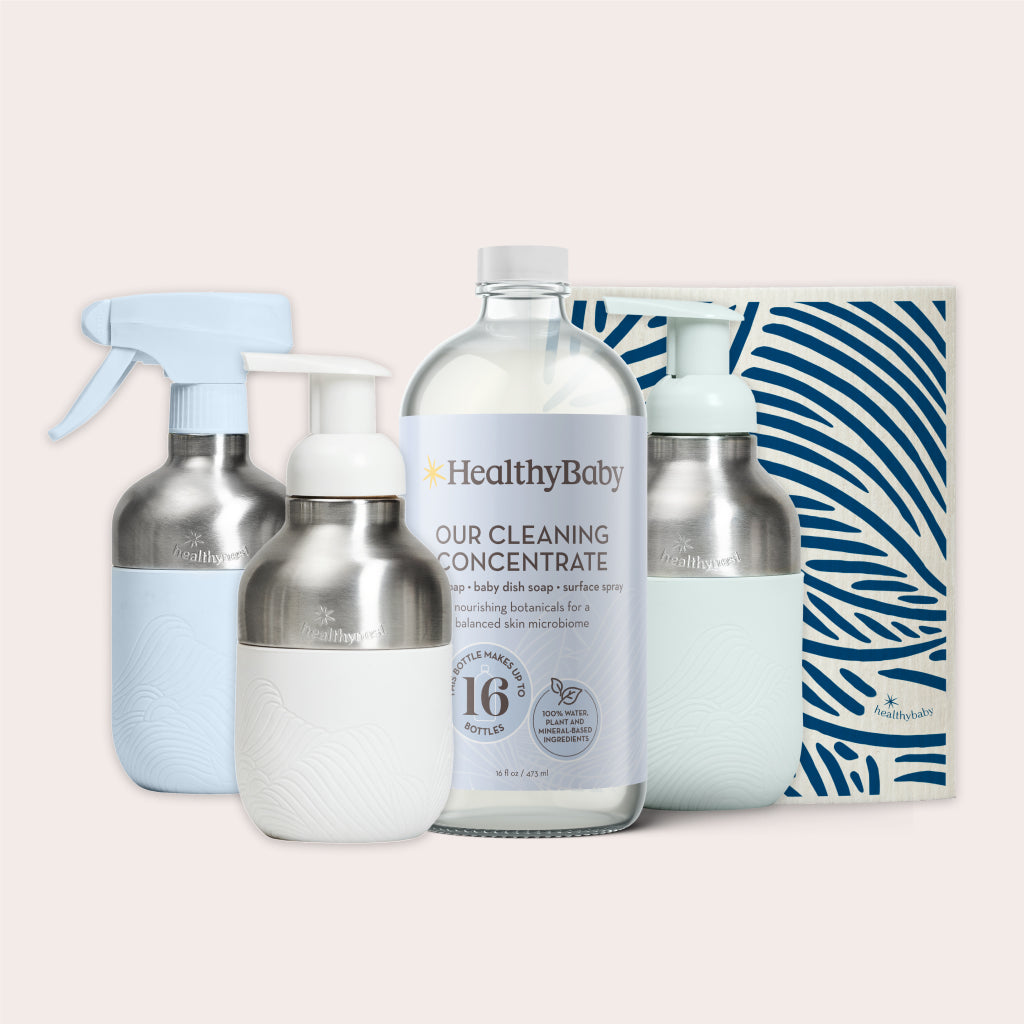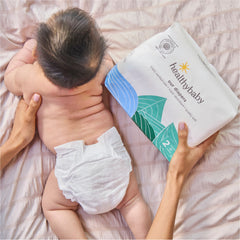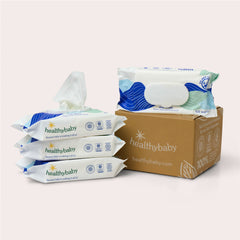A safe, clean home environment is critical for your family's health, whether you're preparing for pregnancy or bringing up baby. Common household items contain neurotoxins, natural or synthetic chemicals that damage or disrupt the nervous system, including the brain, spinal cord, and peripheral nerves.
We talked to experts at the Environmental Working Group (EWG) and the Neurological Health Foundation (NHF) to find the most accessible and impactful ways to reduce neurotoxins at home—and we found a clever way to make them easy to remember.
Here are seven ways to R.E.F.R.E.S.H. your home and reduce neurotoxins.

1. Reduce
While reducing how many things we bring into our lives is an important part of being a green household, we want to take this a step further by encouraging you to reduce household items that contain the most toxins. Carcinogens, endocrine disruptors, and allergens lurk in a large percentage of household products, and their effects aren’t always obvious. Over time, these toxic substances build up in our bodies and can lead to various health issues, from asthma to infertility. Check your family’s personal care products in the EWG's Skin Deep Database and cleaners in EWG's Guide to Healthy Cleaning.
2. Enrich
Having a “clean" home has many meanings. But you want to make sure you only wash away what’s actually harmful. Bacteria is essential to our health. Overcleaning with harsh, antibacterial products can do more harm than good for the microbiome. You can enrich your home by introducing air-purifying plants. The act of planting and repotting exposes your skin to soil, which also feeds your microbiome. You can enrich your microbiome by using soap made with prebiotics and probiotics.
3. Filter
Blocking contaminants from entering your home in the first place is a key way to reduce toxic exposure. The two best areas to filter are air and water. Learn more about air filter options with EWG's Healthy Living Home Guide. You can learn more about To find the best water filter for your home, use the EWG Tap Water Database and Water Filter Buying Guide.
4. Reuse
The classic "new car smell" isn't so clean. Brand new products often give off VOCs (Volatile Organic Compounds) for months. These gases include a variety of chemicals that can have short- and long-term adverse health effects. Buying secondhand or reusing existing items is a great way to reduce the VOCs in your home, and has the bonus advantage of saving money.
5. Ease
There are so many ways to make your home greener, but we understand that time, money, energy, and access are limited. Ease into a safer, cleaner home by prioritizing what makes sense for your family. No one expects you to toss all your products, make drastic home improvements, or vow to never buy anything new.
6. Swap
As much as possible, swap plastic for glass, metal, or ceramic. These materials don't leech like plastic, plus they're more easily recycled.
7. HEPA
Air pollution isn’t just car exhaust or factory smoke. Dust mites, mold spores, pollen, and pet dander can cause a number of health problems. High-efficiency particulate air filters, more commonly known as HEPA, can trap 99.97% of airborne particles with a size of 0.3 microns. Using HEPA filters in your air purifier and vacuum cleaner can trap these pollutants and may relieve allergies and asthma.




